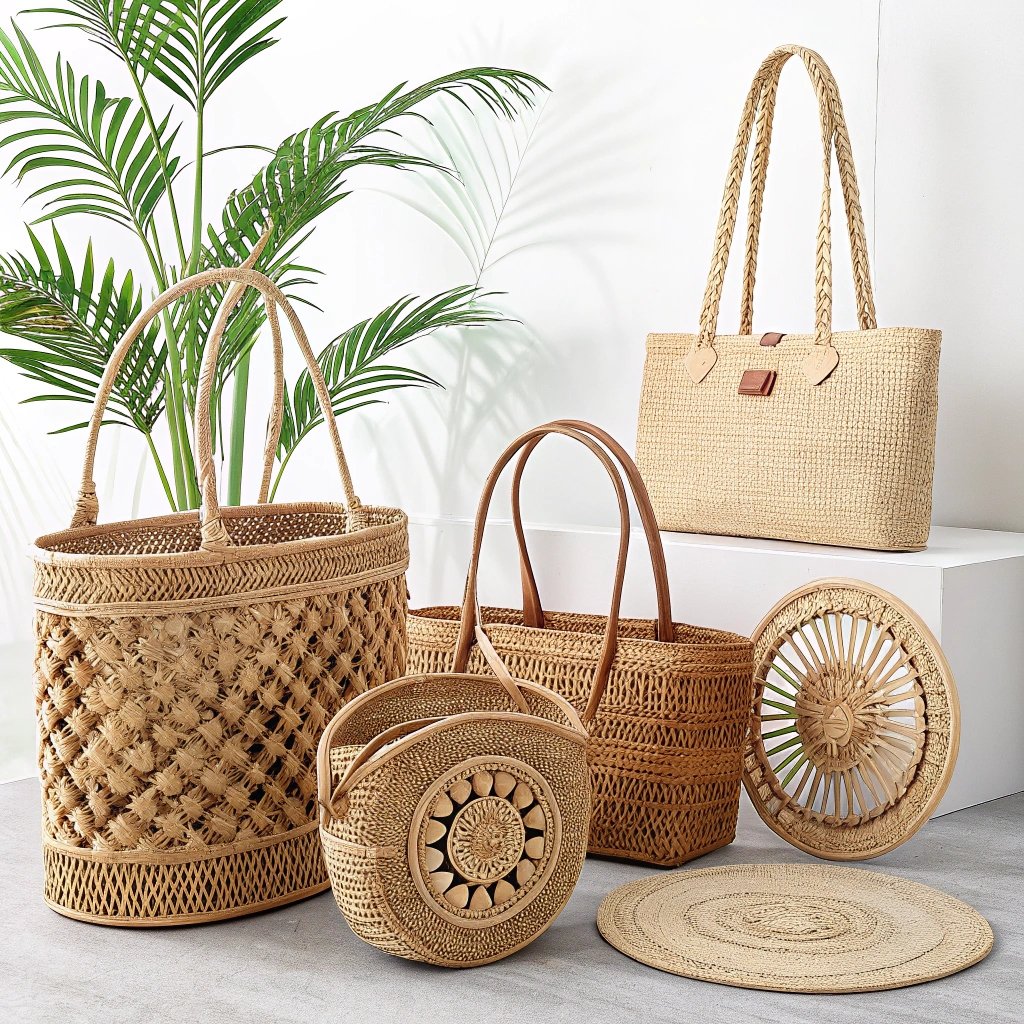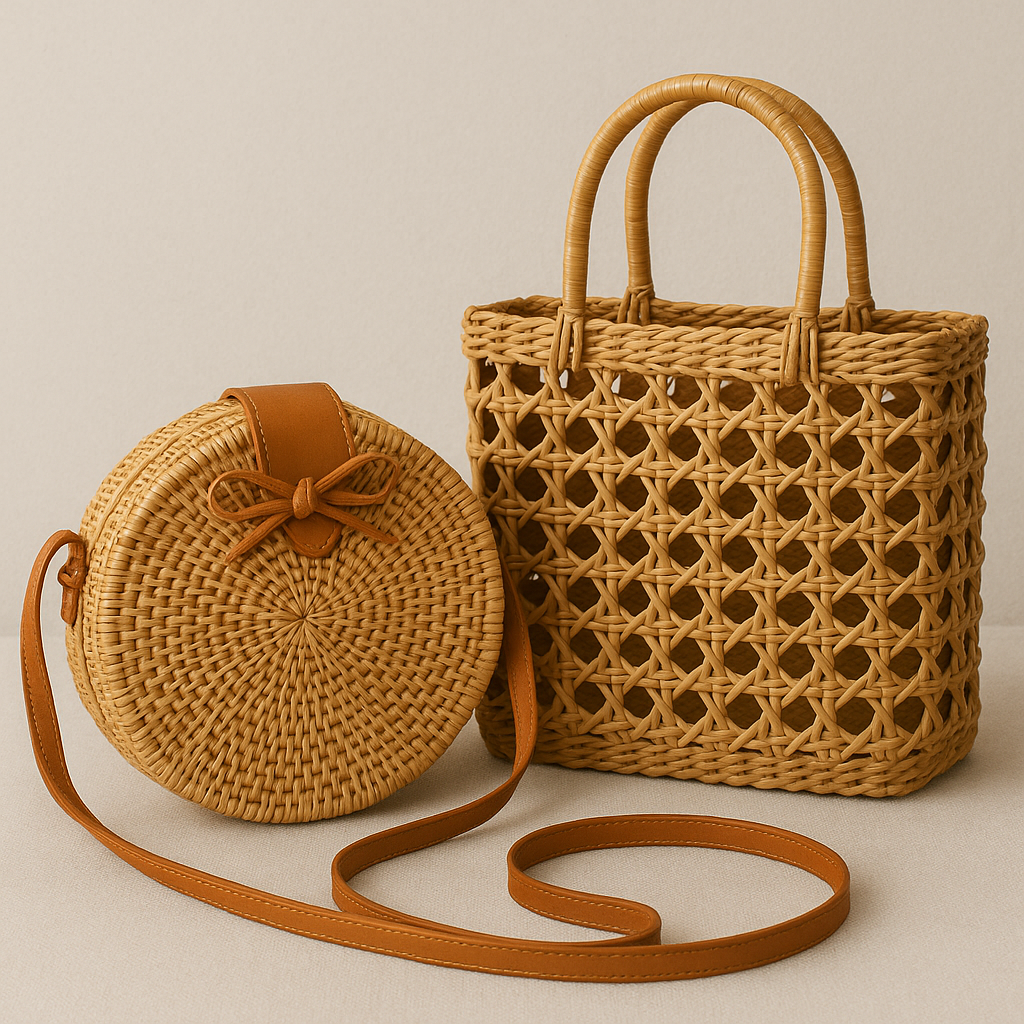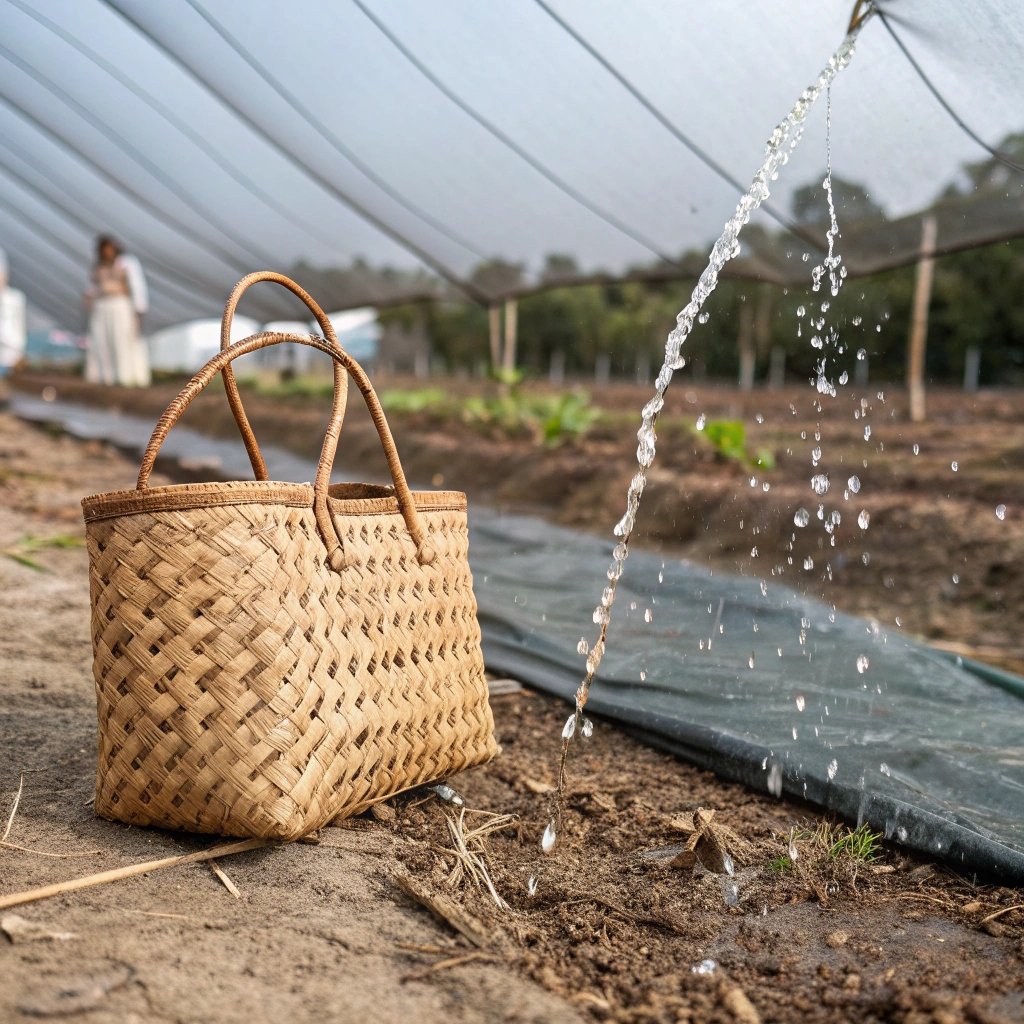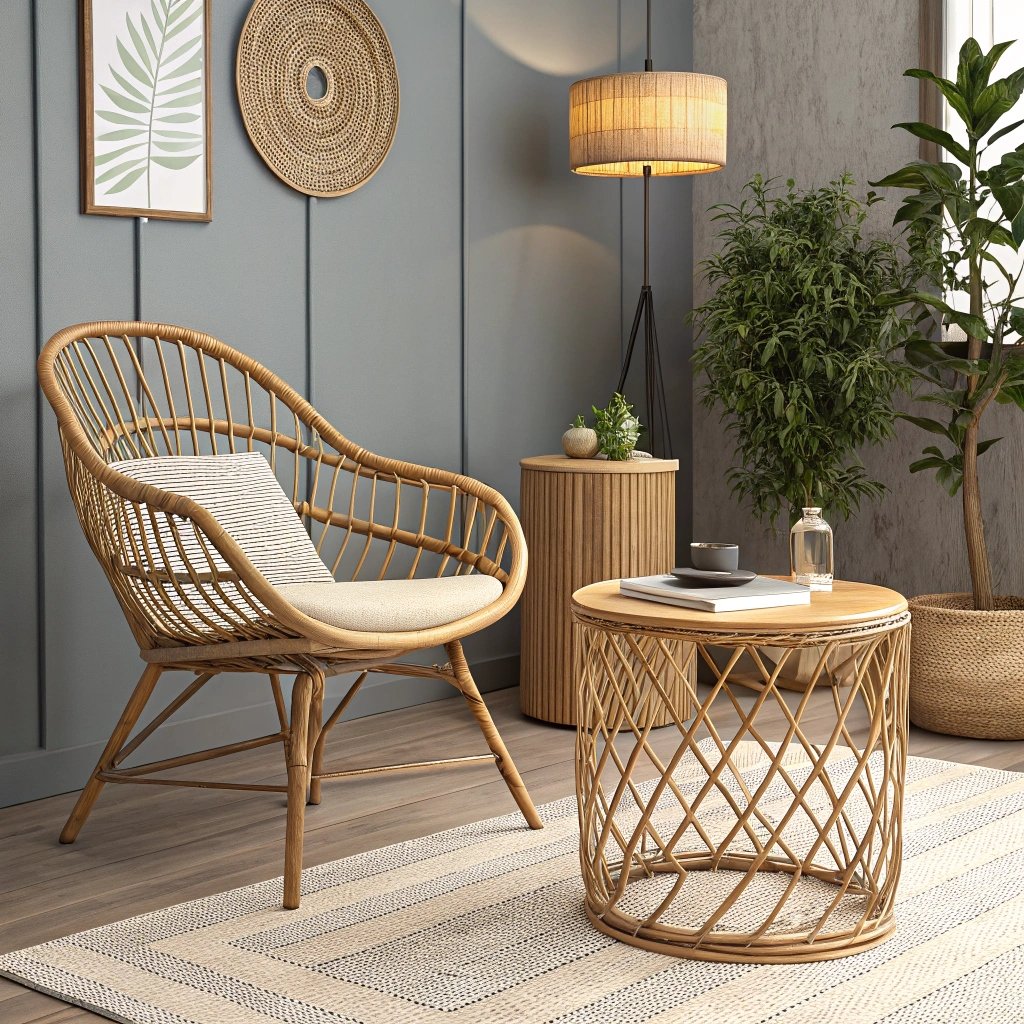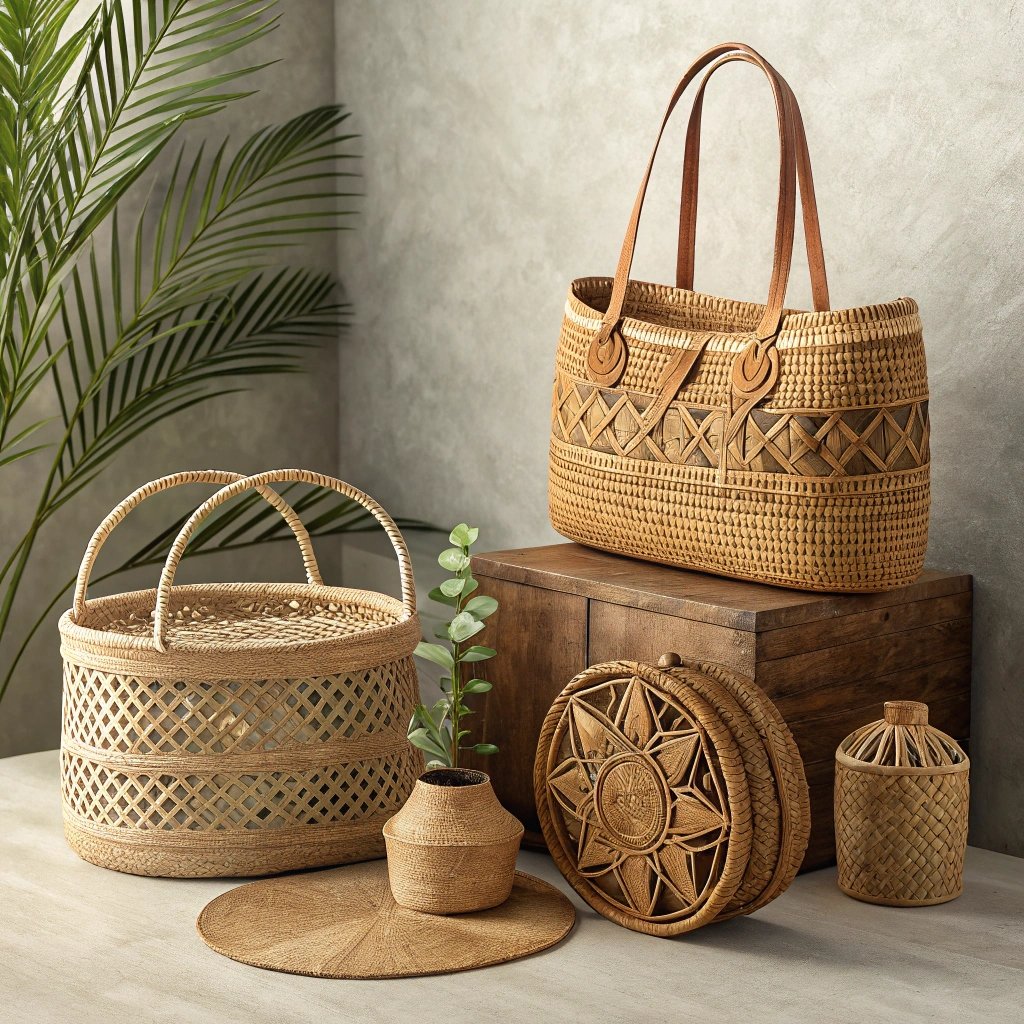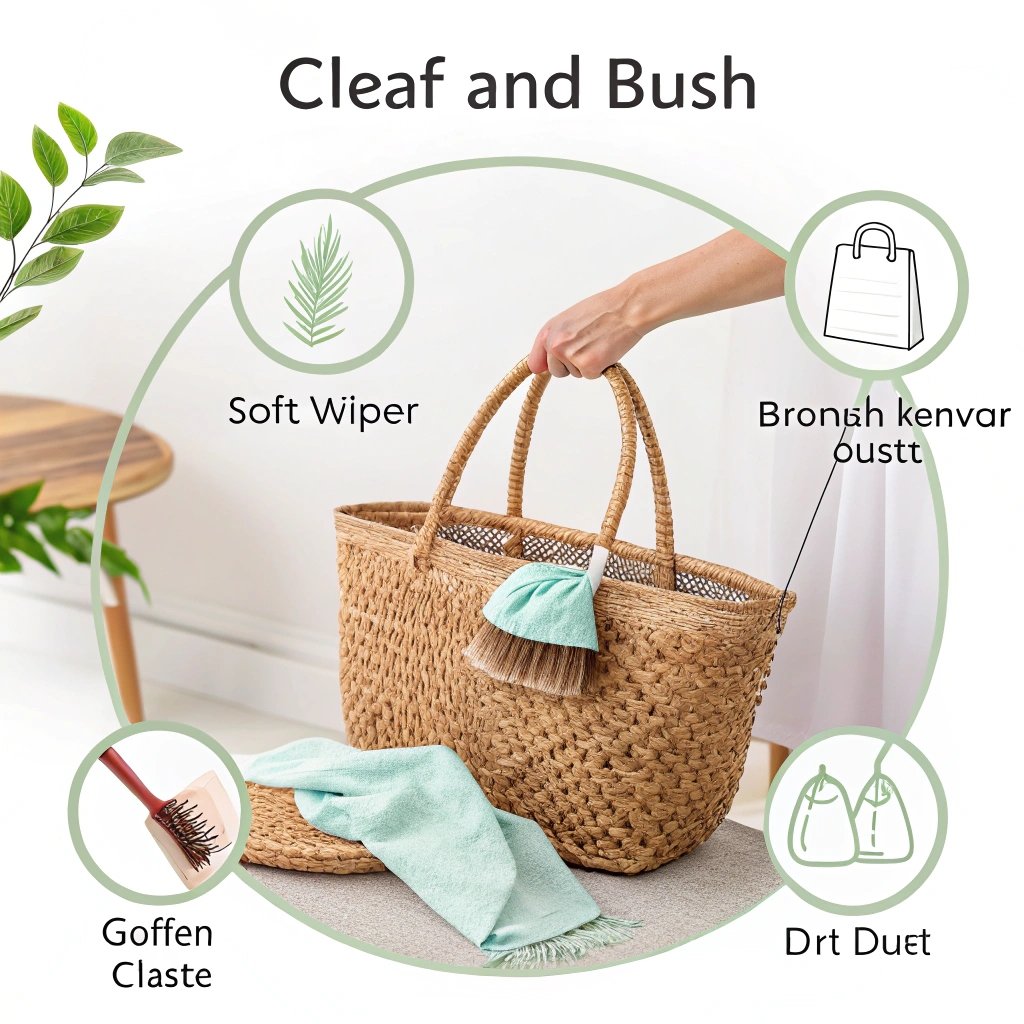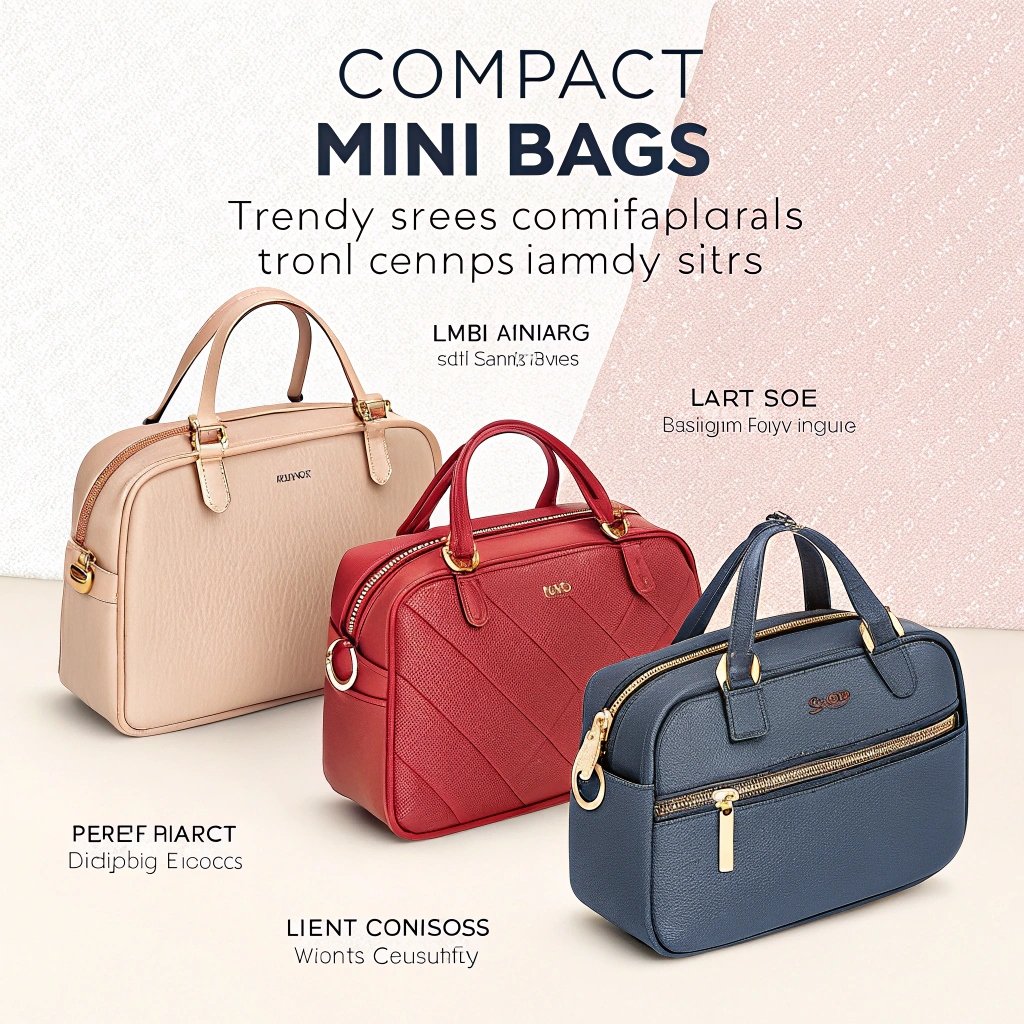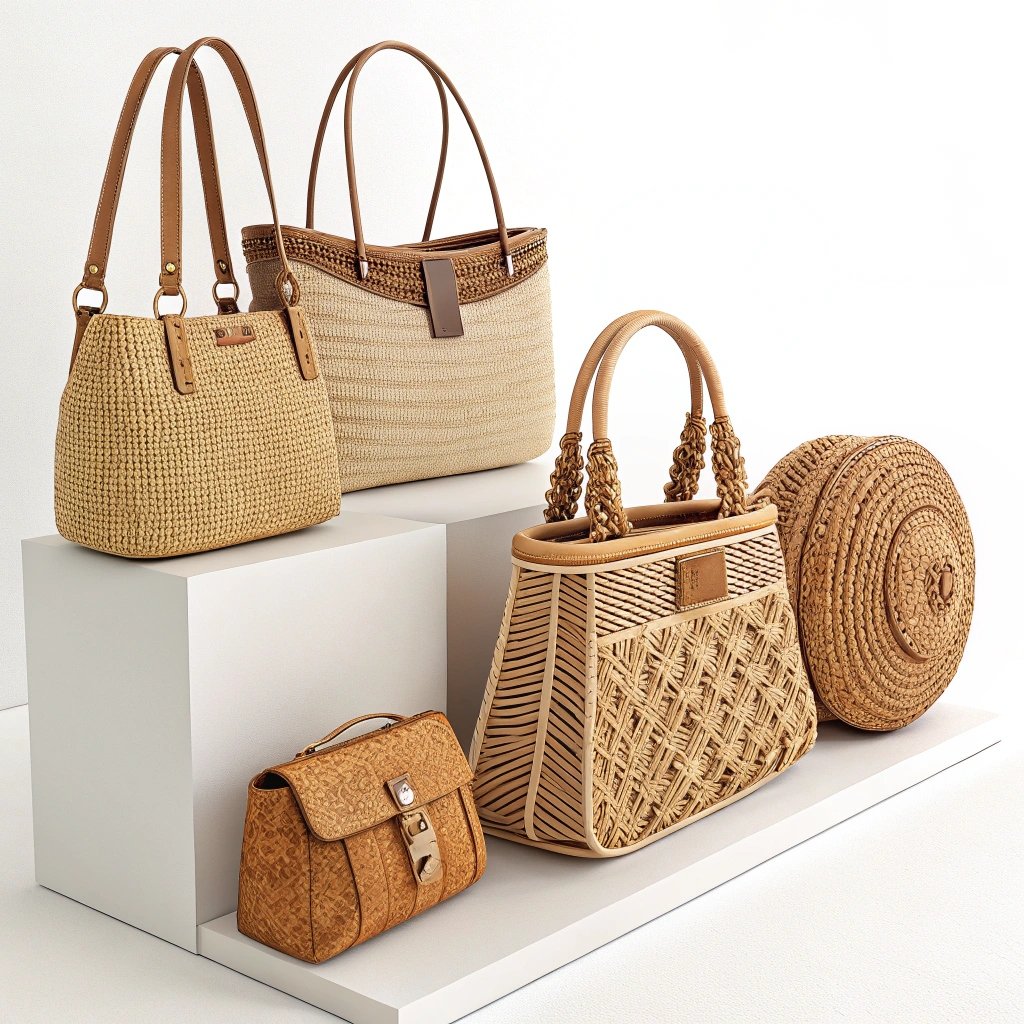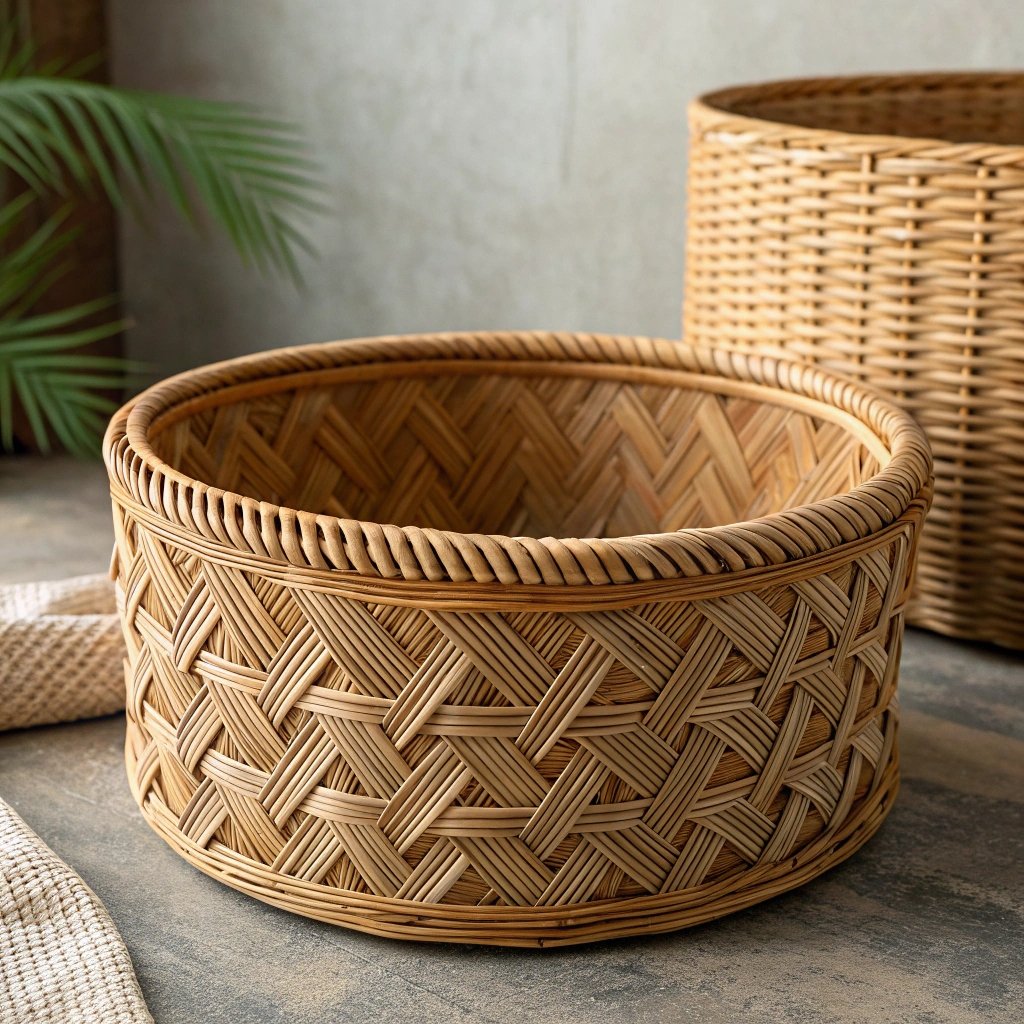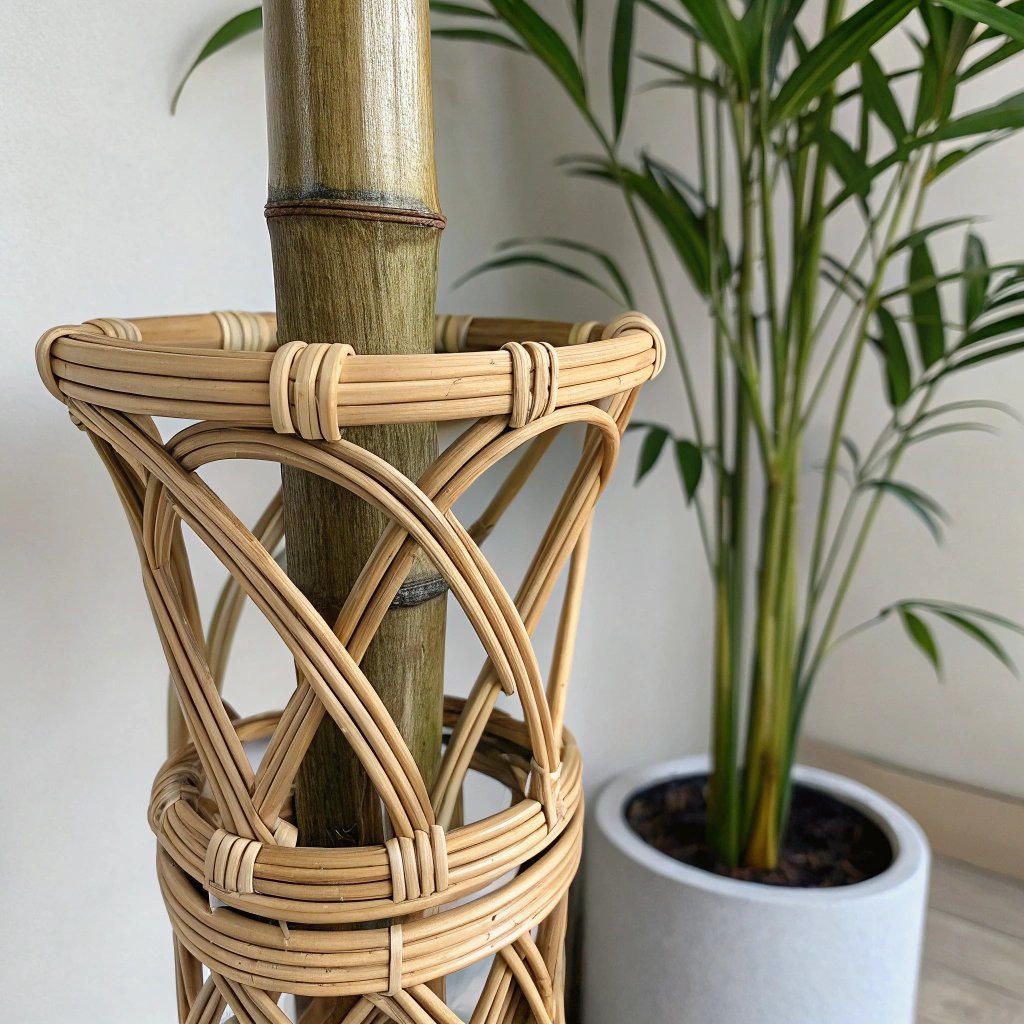Rattan bags are a blend of fashion and nature, made from the strong, flexible stems of the rattan plant1. They're a stylish and eco-friendly accessory choice for many.
Rattan bags are woven from rattan palm stems2, known for their durability and unique texture. They are often used for handbags, providing a natural, rustic appeal.
Curious about the rise and fall of rattan bags? Let's explore how they have evolved over time.
What is a Rattan Bag?
Rattan bags are crafted from the rattan plant, which is native to Southeast Asia. The plant's stems are flexible and can be woven into various shapes, making it perfect for accessories like handbags.
Rattan bags are handmade from rattan palm stems. These bags come in various sizes and shapes, offering durability and a natural look.
Dive-Deeper: The Art of Rattan Weaving
Rattan bags are often handcrafted by skilled artisans. This process involves carefully weaving rattan stems into a basket-like structure, then finishing them with leather straps or metal clasps for a secure closure. Rattan’s flexibility allows for intricate designs that would be difficult to achieve with other materials.
Rattan bags can also be enhanced with unique details like embroidery, beads, and even fabric linings. These details can elevate the bag's appearance, making it not just functional, but also a statement piece. In fact, many high-end designers have embraced rattan in their collections, seeing it as an eco-conscious yet fashionable material.
Rattan vs Other Materials
| Material | Durability | Aesthetic Appeal | Price Range |
|---|---|---|---|
| Rattan | High | Natural, rustic | Moderate |
| Wicker | High | Rustic, casual | Low to Moderate |
| Leather | High | Sleek, luxurious | High |
Are Rattan Bags Still in?
Rattan bags are having a major comeback in recent years. The mix of natural materials and bohemian vibes has made them a favorite in both high fashion and casual wear.
Rattan bags continue to be a hot trend, especially for warm-weather seasons. Their timeless appeal and eco-friendly nature have helped them remain in style.
They remain versatile, easily transitioning from casual day trips to evening outings. The question is, are they still as popular as they once were?
Dive-Deeper: The Timeless Appeal of Rattan Bags
Rattan bags have never truly gone out of style, but their popularity peaked during the boho-chic fashion wave in the 1960s and 1970s. Today, they continue to be embraced by influencers and fashion designers for their unique texture and eco-friendly appeal.
The key to their enduring popularity lies in their ability to complement a wide range of outfits. Whether you're dressing up for a beach vacation or looking for a complement to a sundress, a rattan bag can effortlessly pull your outfit together.
Rattan's Versatility
| Season | Recommended Rattan Bags |
|---|---|
| Summer | Mini crossbody, Tote |
| Spring | Backpack, Clutch |
| Fall/Winter | Oversized, Structured |
Can Rattan Bags Get Wet?
Rattan bags are durable, but they should be kept away from excessive moisture. When wet, rattan can become soft and lose its shape.
Exposure to water can damage the structure of a rattan bag, causing it to weaken or warp. It's best to keep your rattan bag dry.
Curious how to protect your rattan bag during a rainy day? Keep reading to find out.
Dive-Deeper: Protecting Your Rattan Bag
While rattan is a strong material, it can absorb water, causing it to become brittle or misshapen. If you find yourself caught in the rain, it's best to use a protective bag cover or quickly shield it from the elements.
If your rattan bag does get wet, immediately dry it off with a soft cloth. Let it air-dry in a well-ventilated area but avoid direct sunlight, as it can cause the material to crack. If necessary, you can gently reshape the bag while it is still damp.
Tips for Care
| Care Tip | What to Do |
|---|---|
| Getting Wet | Dry off immediately, avoid direct sunlight |
| Dust or Dirt | Clean gently with a soft brush |
| Storage | Keep in a cool, dry place away from direct sunlight |
Is Rattan Coming Back?
Rattan’s natural and eco-friendly properties have contributed to its resurgence in recent years. As sustainability becomes a growing concern in fashion, rattan's use in accessories has become more popular than ever.
Rattan is making a comeback due to its eco-friendly nature and rustic appeal, blending well with contemporary fashion trends.
The growing focus on sustainability is helping to bring rattan back into the spotlight. But is it here to stay? Let’s dive deeper.
Dive-Deeper: The Sustainable Appeal of Rattan
Rattan is often used in sustainable fashion because it's a natural, renewable resource. Unlike other materials, rattan can grow quickly without damaging ecosystems, making it a popular choice for eco-conscious consumers. This aligns perfectly with the growing demand for ethical and sustainable fashion.
Additionally, as more consumers lean toward sustainable alternatives, the demand for rattan in bags, furniture, and other accessories is expected to increase. Whether or not it remains a constant trend will largely depend on how the fashion industry evolves in response to environmental concerns.
Where Are Rattan Bags Made?
Rattan bags are primarily made in countries where rattan palms are native, particularly in Southeast Asia. Indonesia, the Philippines, and Thailand are major producers of these handmade bags.
The majority of rattan bags are crafted in Southeast Asia, where skilled artisans weave the rattan stems into beautiful and durable designs.
Looking for a rattan bag from an ethical supplier? Here's where you can find them.
Dive-Deeper: The Global Rattan Industry
Countries like Indonesia and the Philippines are home to many small-scale rattan artisans who have been honing their craft for generations. These bags are often handmade, with each piece requiring hours of skilled labor.
Despite the high demand for rattan products globally, production remains largely local, which helps preserve traditional crafting techniques. In recent years, ethical fashion brands have started working directly with artisans, ensuring fair wages and sustainable practices.
Top Rattan Producing Countries
| Country | Primary Rattan Products | Key Export Markets |
|---|---|---|
| Indonesia | Bags, furniture, baskets | USA, Europe |
| Philippines | Bags, furniture | North America, Australia |
| Thailand | Bags, home decor, furniture | Europe, North America |
How Do You Clean a Rattan Bag?
To keep your rattan bag looking fresh, clean it regularly with a soft brush or damp cloth. Avoid harsh chemicals that can damage the surface.
Cleaning a rattan bag involves gentle wiping and brushing to remove dust and dirt. Avoid soaking the material in water.
Worried about how to maintain your rattan bag's longevity? Keep reading.
Dive-Deeper: Cleaning Techniques for Rattan Bags
Regular cleaning is essential to maintain the beauty of a rattan bag. Use a soft brush to gently remove dust and debris from the surface. For deeper cleaning, a damp cloth can be used to wipe the surface, but make sure the bag is not soaked. After cleaning, allow the bag to air-dry in a cool, dry place.
In cases where the rattan has become heavily stained, a mild soap solution may be used sparingly. Always test a small, inconspicuous area first before cleaning the entire bag.
Are Mini Bags Still on Trend?
Mini bags, often made from materials like rattan, have seen a surge in popularity due to their cute, compact nature. These bags are practical and stylish, perfect for carrying the essentials.
Mini bags remain on trend, offering a blend of style and functionality for those who need just the essentials.
Looking for a mini rattan bag? Let’s explore why they’re still fashionable.
Dive-Deeper: The Allure of Mini Bags
Mini bags became a trend several years ago, and their popularity shows no signs of slowing down. These small but fashionable accessories are the perfect complement to minimalistic outfits. While they may not be as practical as larger bags, mini bags offer a unique way to carry only your essentials.
Additionally, mini bags often come in eye-catching designs, such as woven rattan, adding texture and interest to any outfit.
Are Straw Purses in Style?
Straw purses, including those made from rattan, are still very much in style. Their natural appearance and vintage charm continue to resonate with fashion enthusiasts.
Straw purses, including rattan, remain stylish due to their natural, casual look and their ability to pair with various outfits.
Wondering why these bags keep coming back? Let’s dive into their enduring popularity.
Dive-Deeper: Straw Purses’ Lasting Appeal
Straw purses, including rattan bags, are associated with carefree summer days and relaxed beach vacations. Their light, airy feel and earthy texture make them the perfect accessory for warm-weather outfits.
As fashion evolves, so do the designs of straw purses. What once started as simple beach accessories has transformed into chic, high-fashion bags seen on runways and in everyday wear.
Why Is Rattan So Expensive?
Rattan is considered an expensive material due to its labor-intensive production process, rarity, and durability.
The cost of rattan is influenced by the skill required to weave it, as well as the time it takes to harvest and craft it into products.
Looking to invest in a high-quality rattan bag? Let’s explore why they come at a higher price point.
Dive-Deeper: The Cost of Crafting Rattan Accessories
The process of weaving rattan into intricate bags and furniture requires a great deal of skill and time. Artisans must carefully select the best rattan stems, then spend hours crafting each item by hand. This manual process is not only time-consuming but also requires a high level of expertise. Additionally, the cost of raw rattan and the need for sustainable harvesting practices contribute to the price of the final product.
What Is Better Rattan or Wicker?
Rattan and wicker are often confused, but they are not the same. Rattan refers to the material, while wicker refers to the weaving process.
Rattan is a material, while wicker is a technique. Both are durable and popular, but rattan is the raw material used for making wicker items.
Which one is better for your needs? Let’s explore the differences.
Dive-Deeper: Understanding the Difference
While both rattan and wicker are strong, flexible, and durable, rattan is the raw material from which wicker products are made. Wicker is the technique used to weave the material into intricate shapes. This distinction is essential to understanding why rattan bags are so popular. While rattan provides flexibility, wicker allows artisans to create more elaborate designs.
Why Is It Called Rattan?
The word "rattan" comes from the Malay word "rotan," which refers to the thin stems of the rattan palm tree.
Rattan is named after the Malay word "rotan," which describes the plant's flexible stems used in furniture and accessories.
Want to learn more about the origin of rattan? Here’s a deeper look.
Dive-Deeper: The History of Rattan
Rattan has been used for thousands of years, especially in Southeast Asia. It’s believed that the early use of rattan was for building homes and creating tools. Over time, it became a staple in crafting furniture and accessories. The name itself comes from the Malay language, but its widespread use and versatility have made it a global material.
Conclusion
Rattan bags continue to be a fashionable and sustainable accessory choice. Whether you're looking for a classic style or a trendy mini bag, rattan offers a unique appeal that endures through generations.


